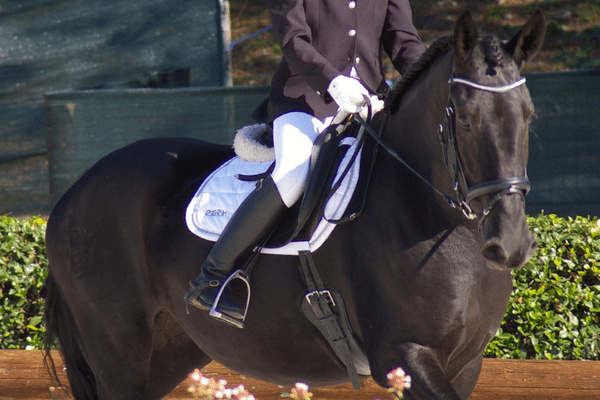Originating from the Murge region of Apulia in Italy, the Murgese horse stands as a testament to the nation’s rich equestrian lineage. The breed’s establishment is attributed to the period of Spanish dominance over Italy, where it was meticulously developed by crossbreeding the resilient Barb horses with the graceful Arabian lines. This strategic breeding produced a robust horse that not only excels in cross-country riding but also showcases versatility by performing light draft tasks. A blend of endurance, agility, and strength, the Murgese is a reflection of Italy’s commitment to preserving and celebrating its equestrian traditions.
History:
Spanish Legacy and Roots:
The Murgese horse’s roots can be traced back to Spain’s rule in Italy during an era marked by conquest and cultural exchanges. During this epoch was when its design began taking shape: by skillfully mixing robust Barb and graceful Arabian horses introduced by Count of Conversano with indigenous Neapolitan breeds from Naples, an exquisite new horse breed emerged that remains highly prized today.
Golden Era of the 15th and 16th Centuries:
Murgese horses quickly rose in popularity among Italian cavalry riders, quickly becoming an icon of strength and dependability in battle. Not only were these magnificent beasts majestic to look upon but they proved to be exceptional battlefield performers as well. Unfortunately, as time passed this revered breed faced its share of obstacles: its numbers began dwindling dramatically until it eventually came close to extinction altogether.
Literary Insights from “Il Cavallarizzo”:
Claudio Corte’s groundbreaking work from 1562, “Il Cavallarizzo”, provides invaluable insights into the equestrian scene at that time. Corte notes in his treatise that many sought-after Neapolitan warhorses originated in Puglie and Calabria regions – this revelation presents us with a clearer view, placing Murgese horses as direct and worthy successors of Neapolitan horse lineage.
20th Century: Revitalization and Refinement:
Recognizing the historical and cultural importance of Murgese horses, attempts were undertaken in 1926 to revitalize and redefine them. A foundational group of 55 selected horses were assembled under the Institute for the Improvement of Horse Populations; notable among these stallions are Nerone, Granduca and Araldo delle Murge who remain integral parts of today’s Murgese bloodlines.
Support Through Organizational Initiatives & Preservation Plans:
Recognizing the need for organized assistance, the Associazione Regionale Allevatori dell’Asino di Martina Franca e del Cavallo delle Murge was founded in 1948 to promote, protect, and propagate this breed of horse. Furthermore, Italy’s Ministry of Agriculture and Forestry acknowledged its unique qualities by including it on their Anagraphic Register in 1990 – marking an historic victory for Murgese breeders!
Modern Day Status and Ensuring Genetic Integrity:
At the turn of the 21st century, Murgese breeding animals have experienced exponential growth. By 2005, over 1,500 breeding animals had been registered and registered, including 1,080 mares, 107 stallions and 350 promising foals. Each Murgese horse undergoes stringent blood typing prior to registration with official breeding status being approved; and in 2004, an extensive study confirmed that genetic diversity is respected within acceptable standards, with inbreeding metrics also remaining within accepted boundaries.


Breed characteristics:
Height & Appearance: One of the first things you’ll notice about a Murgese horse is their impressive stature – these majestic horses stand between 150 to 168 centimeters (14.3 to 16.2 hands). Additionally, their deep black coats or intricate dark roans heighten their royal bearing and make them a pleasure to witness anywhere they appear.
Distinctive Head Features: Murgese horses are masterfully sculpted works of equine art. Boasting profiles ranging from straight to gently convex, their exquisite heads exhibit exquisite artistry. Notably, their broad forehead not only exudes aesthetic charm but also suggests intelligence and alertness. Furthermore, some individuals of this breed exhibit distinctive jawlines to give an additional depth and dimension to their countenances.
Physique & Build: The Murgese’s neck is a stunning symbol of its power and elegance, robust in build yet widening gracefully as it falls toward its base, acting as an elegant transition to their pronounced withers. Their deep chests and gracefully sloping shoulders speak volumes about both endurance and agility in these horses.
Croup & Posture: The Murgese’s distinctive croup is one of its hallmark characteristics. Depending on its individual, its form may range from long and flat to an elegant incline – further accentuating their majestic presence and giving their overall balanced posture extra weight.
Legs & Hooves: Murgese horses are known for their powerful legs with well-defined joints that give the breed its signature stability and performance capability. An equally striking feature are their pitch-black hooves – not only visually striking but also celebrated for their exceptional hardness which provides the Murgese with an advantage on all types of terrains.
Temperament & Comparisons: Murgese horses stand out among other breeds due to their distinct temperament. Particularly impressive is how even its powerful stallions possess gentle natures that often allow them to be ridden without needing to be gelded, which attests to their docility and makes them popularly associated with Friesian horses which share these same characteristics of grand bearing yet mild natures.


Uses of horse:
Cavalry Horse: For centuries, Murgese horses were an integral component of Italian cavalry units in both the 15th and 16th centuries, particularly as mounted units in Northern Italy. Due to their strength, stamina and trainability they proved ideal for military use.
Agricultural Work: Before mechanization became common, horses were widely employed for agricultural activities, particularly plowing and hauling tasks. Their sturdy build made them ideal for such work.
Riding and Trekking: Murgese horses are popular choices for recreational riding due to their smooth gaits and friendly disposition, and are particularly suited to long treks or cross-country riding due to their impressive stamina.
Driving and Carriage Work: Their calm yet strong nature make them ideal for driving disciplines, including both competitive driving and carriage work for tourism or special events.
Equestrian Sports: Recently, Murgese horses have been seen competing in various equestrian sports such as dressage and show jumping due to their agility and trainable nature.

